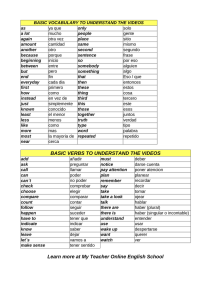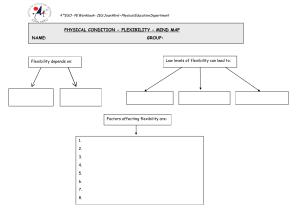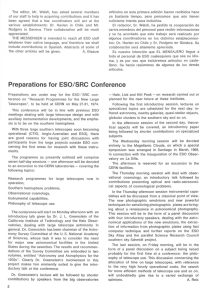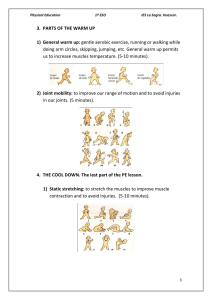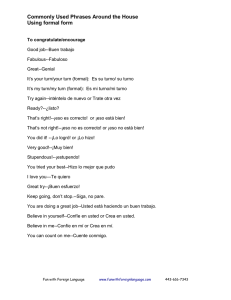(Inter)subjectivity in neuter demonstratives: Spanish
Anuncio
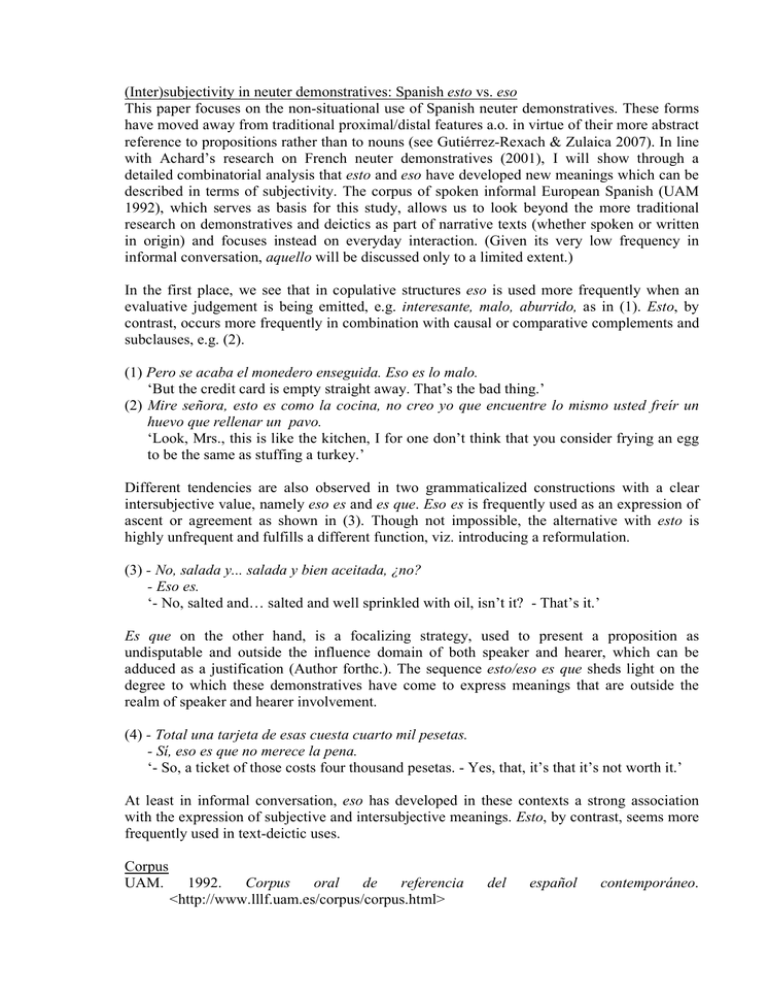
(Inter)subjectivity in neuter demonstratives: Spanish esto vs. eso This paper focuses on the non-situational use of Spanish neuter demonstratives. These forms have moved away from traditional proximal/distal features a.o. in virtue of their more abstract reference to propositions rather than to nouns (see Gutiérrez-Rexach & Zulaica 2007). In line with Achard’s research on French neuter demonstratives (2001), I will show through a detailed combinatorial analysis that esto and eso have developed new meanings which can be described in terms of subjectivity. The corpus of spoken informal European Spanish (UAM 1992), which serves as basis for this study, allows us to look beyond the more traditional research on demonstratives and deictics as part of narrative texts (whether spoken or written in origin) and focuses instead on everyday interaction. (Given its very low frequency in informal conversation, aquello will be discussed only to a limited extent.) In the first place, we see that in copulative structures eso is used more frequently when an evaluative judgement is being emitted, e.g. interesante, malo, aburrido, as in (1). Esto, by contrast, occurs more frequently in combination with causal or comparative complements and subclauses, e.g. (2). (1) Pero se acaba el monedero enseguida. Eso es lo malo. ‘But the credit card is empty straight away. That’s the bad thing.’ (2) Mire señora, esto es como la cocina, no creo yo que encuentre lo mismo usted freír un huevo que rellenar un pavo. ‘Look, Mrs., this is like the kitchen, I for one don’t think that you consider frying an egg to be the same as stuffing a turkey.’ Different tendencies are also observed in two grammaticalized constructions with a clear intersubjective value, namely eso es and es que. Eso es is frequently used as an expression of ascent or agreement as shown in (3). Though not impossible, the alternative with esto is highly unfrequent and fulfills a different function, viz. introducing a reformulation. (3) - No, salada y... salada y bien aceitada, ¿no? - Eso es. ‘- No, salted and… salted and well sprinkled with oil, isn’t it? - That’s it.’ Es que on the other hand, is a focalizing strategy, used to present a proposition as undisputable and outside the influence domain of both speaker and hearer, which can be adduced as a justification (Author forthc.). The sequence esto/eso es que sheds light on the degree to which these demonstratives have come to express meanings that are outside the realm of speaker and hearer involvement. (4) - Total una tarjeta de esas cuesta cuarto mil pesetas. - Sí, eso es que no merece la pena. ‘- So, a ticket of those costs four thousand pesetas. - Yes, that, it’s that it’s not worth it.’ At least in informal conversation, eso has developed in these contexts a strong association with the expression of subjective and intersubjective meanings. Esto, by contrast, seems more frequently used in text-deictic uses. Corpus UAM. 1992. Corpus oral de referencia <http://www.lllf.uam.es/corpus/corpus.html> del español contemporáneo.
